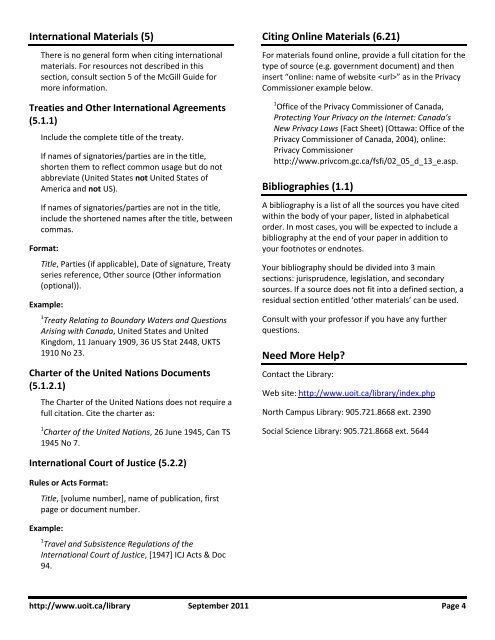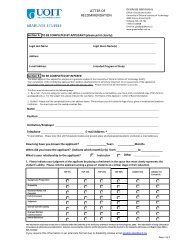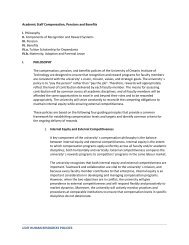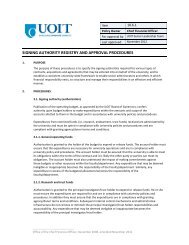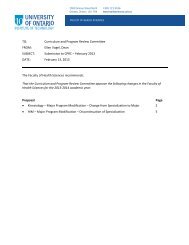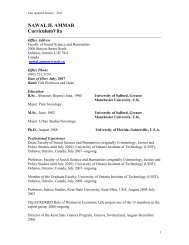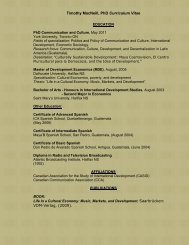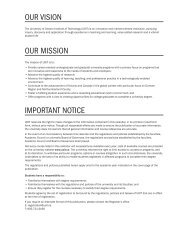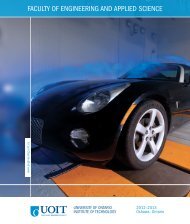Citing Legal Sources Quick Reference
Citing Legal Sources Quick Reference
Citing Legal Sources Quick Reference
You also want an ePaper? Increase the reach of your titles
YUMPU automatically turns print PDFs into web optimized ePapers that Google loves.
International Materials (5)There is no general form when citing internationalmaterials. For resources not described in thissection, consult section 5 of the McGill Guide formore information.Treaties and Other International Agreements(5.1.1)Include the complete title of the treaty.If names of signatories/parties are in the title,shorten them to reflect common usage but do notabbreviate (United States not United States ofAmerica and not US).If names of signatories/parties are not in the title,include the shortened names after the title, betweencommas.Format:Title, Parties (if applicable), Date of signature, Treatyseries reference, Other source (Other information(optional)).Example:1 Treaty Relating to Boundary Waters and QuestionsArising with Canada, United States and UnitedKingdom, 11 January 1909, 36 US Stat 2448, UKTS1910 No 23.Charter of the United Nations Documents(5.1.2.1)The Charter of the United Nations does not require afull citation. Cite the charter as:1 Charter of the United Nations, 26 June 1945, Can TS1945 No 7.<strong>Citing</strong> Online Materials (6.21)For materials found online, provide a full citation for thetype of source (e.g. government document) and theninsert “online: name of website ” as in the PrivacyCommissioner example below.1 Office of the Privacy Commissioner of Canada,Protecting Your Privacy on the Internet: Canada’sNew Privacy Laws (Fact Sheet) (Ottawa: Office of thePrivacy Commissioner of Canada, 2004), online:Privacy Commissionerhttp://www.privcom.gc.ca/fsfi/02_05_d_13_e.asp.Bibliographies (1.1)A bibliography is a list of all the sources you have citedwithin the body of your paper, listed in alphabeticalorder. In most cases, you will be expected to include abibliography at the end of your paper in addition toyour footnotes or endnotes.Your bibliography should be divided into 3 mainsections: jurisprudence, legislation, and secondarysources. If a source does not fit into a defined section, aresidual section entitled ‘other materials’ can be used.Consult with your professor if you have any furtherquestions.Need More Help?Contact the Library:Web site: http://www.uoit.ca/library/index.phpNorth Campus Library: 905.721.8668 ext. 2390Social Science Library: 905.721.8668 ext. 5644International Court of Justice (5.2.2)Rules or Acts Format:Title, [volume number], name of publication, firstpage or document number.Example:1 Travel and Subsistence Regulations of theInternational Court of Justice, [1947] ICJ Acts & Doc94.http://www.uoit.ca/library September 2011 Page 4


